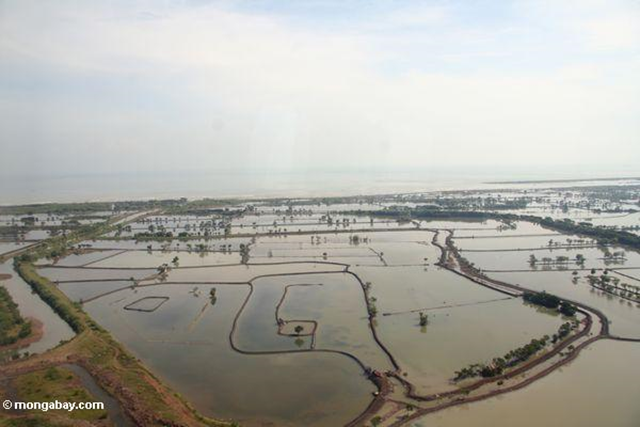Half of Indonesia's mangroves gone in less than thirty years
By Jeremy Hance, www.mongabay.com
March 23, 2010 The Jakarta Post reports that, according to the local NGO People’s Coalition for Justice in Fisheries (Kiara), Indonesia’s has lost 2.2 million hectares of mangroves in less than thirty years, going from covering 4.2 million hectares in 1982 to just 2 million hectares today. Kiara’s Secretary General M. Riza Damanik blamed the loss of mangroves on the construction of brackish fishponds and the expansion of oil palm plantations. Damanik also pointed out that the consequences of mangrove-loss were many. Fish production has declined in many parts of Indonesia, since mangroves are vital fish nurseries, while coasts without mangroves are experiencing rapid erosion, because there is no longer an ecosystem buffer against high waves In addition to providing fish habitat and buffers against erosion, mangroves are an also important carbon sink since they can store carbon in their soils for hundreds of years. A number of species, like the proboscis monkey, live in only in mangroves: many of these mangrove-specialists are endangered by habitat loss. Mangroves also save lives and property. Studies have shown that during the devastating 2004 tsunami in Southeast Asia, regions with mangroves suffered less damage than those without.
Half of Indonesia’s mangroves gone in less than thirty years
